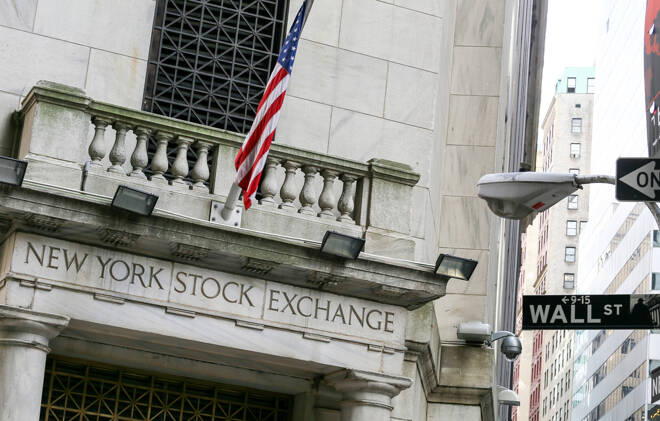Advertisement
Advertisement
General Mills Shares Slump as Q3 Earnings Disappoint
By:
General Mills’ shares slumped over 5% on Wednesday after the manufacturer of branded consumer foods reported lower-than-expected earnings in the third quarter.
General Mills’ shares slumped over 5% on Wednesday after the manufacturer of branded consumer foods reported lower-than-expected earnings in the third quarter.
The Golden Valley, Minnesota-based company said its net sales increased 8% to $4.5 billion and organic net sales increased 7%. The company said its operating profit increased 27% to $827 million and diluted earnings per share (EPS) totaled $0.96, up 30 percent from the prior year; Adjusted diluted EPS increased 6 percent to $0.82. However, that missed Wall Street’s consensus estimates of $0.84 per share.
General Mills shares, which rose about 10% in 2020, slumped over 5% to $58.04 on Wednesday.
The company expects full-year organic net sales to increase approximately 3.5 percent, reflecting strong year-to-date growth, partially offset by a difficult comparison in the fourth quarter reflecting the initial pandemic-driven surge in at-home food demand as well as the extra month of results in the Pet segment.
On the bottom line, better-than-expected first-half adjusted operating profit margin results are now expected to be offset by higher input cost inflation and higher logistics costs in the second half. As a result, the full-year fiscal 2021 adjusted operating profit margin is expected to be approximately in line with fiscal 2020 levels, consistent with the guidance the company outlined at the beginning of the year, the company said in the statement.
Analyst Comments
“While noting investors are looking past near-term result to a post-COVID-19 outlook, and fund flows between staples vs discretionary names (and value vs growth) have driven much of the group’s stock performance lately, we believe Mills’s results will be perceived negatively given a large GM miss, as commodities ramp-up, an issue we have been highlighting for the CPG group and food sector in particular, despite solid organic sales,” noted Dara Mohsenian, equity analyst at Morgan Stanley.
“We forecast slight LT organic sales growth after outsized +4% FY20 organic growth on COVID-19 related demand, with muted category and geographic growth. GIS also has a limited margin expansion opportunity (we model +10 bps/yr) with an already efficient cost structure.”
General Mills Stock Price Forecast
Five analysts who offered stock ratings for General Mills in the last three months forecast the average price in 12 months of $61.20 with a high forecast of $66.00 and a low forecast of $55.00.
The average price target represents a 5.43% increase from the last price of $58.05. Of those five analysts, one rated “Buy”, four rated “Hold” while none rated “Sell”, according to Tipranks.
Morgan Stanley gave the base target price of $57 with a high of $79 under a bull scenario and $37 under the worst-case scenario. The firm gave an “Equal-weight” rating on the food company’s stock.
Several other analysts have also updated their stock outlook. Credit Suisse raised the price target to $66 from $62. Jefferies upped the price objective to $63 from $59. JPMorgan lifted the target price to $59 from $55. Evercore ISI lowered their price target to $60 from $66.
Upside and Downside Risks
Risks to Upside: Strong topline growth in the US with yogurt rebound, improved distribution/innovation (with LT pantry/shelf space gains post-COVID-19 pantry-loading), strong margin expansion on higher cost savings/lower commodity inflation, and BUFF upside – highlighted by Morgan Stanley.
Risks to Downside: Volume pressure from health/wellness, pricing pressure, weak margin expansion on higher reinvestment to drive topline, commodity cost pressure, and BUFF downside.
Check out FX Empire’s earnings calendar
About the Author
Vivek Kumarauthor
Vivek has over five years of experience in working for the financial market as a strategist and economist.
Advertisement
